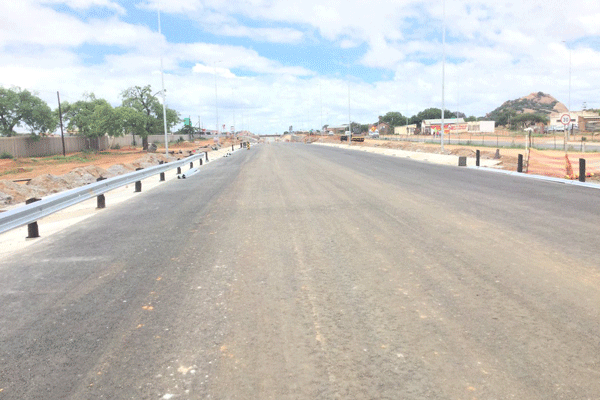
The community of Botlokwa’s pleas for a safe road have been answered. The N1, which cuts through the Limpopo village, has been made safer for Botlokwa residents living on the road.
After three years of constructing the road, The South African National Roads Agency (SOC) Limited (SANRAL) opened the portion of the N1 to traffic on 10 July 2017 and handed it to the community.
Botlokwa lies on the N1 highway between Polokwane and the Beitbridge Border Post. The town is divided by the busy highway. As a result some people live on one side but do their shopping or attend school on the other.
In recent years, the community has seen an increasing number road fatalities. Paying a simple visit to a friend’s house was a life-threatening exercise. But with the refurbished road, residents can look forward to a safer commute.
How it was done
The elders of the community together with the Provincial Roads Authority approached SANRAL with a request to improve safety on the road in Botlokwa.
SANRAL heard the community’s pleas. After some discussions, it was decided that the roads agency would separate the passing traffic and the local people by lowering the road, and fencing it off. They would then build a road bridge on the existing ground level as well as two pedestrian bridges for the local people. This way, the community would not be inconvenienced while crossing from one side of the village to another and their safety would be secured because the highway would be inaccessible.
Tshidi Lethale, SANRAL Project Manager, said: “The project has enabled improved road safety for both vehicles and pedestrians. This was done by preventing the illegal access of pedestrians and traffic to the N1 by means of two pedestrian bridges and a vehicle bridge.”
The community wanted a level crossing at the busiest intersection, so that the bridge would be on the natural ground level. Subsequently, the N1 was dropped by seven metres. The vehicle bridge was built with two three-metre-wide walkways on either side of the road and the two additional pedestrian bridges at either end of the village were constructed above street level.
Locals employed
Wherever possible, SANRAL used SMMEs from the village and employed unskilled and semi-skilled locals to construct drainage and other concrete works, erect fences and safely direct the flow of pedestrians during construction.
Some 25 local sub-contractors were employed and 15 local businesses were used during the construction of the project.
“In total, we lowered 1.4km of the highway, with an average of 180 people working on the project at any one time,” said Lethale. “We only used local subcontractors and labour, where feasible.”
Throughout the process, SANRAL engaged with the community and its leaders to ensure that everyone would be satisfied with the final result and with how it was achieved.
Lethale said: “During construction, we held monthly meetings between WBHO, the contractors and ourselves. And the week before these meetings, we met with the Public Liaison Committee (PLC) to get their input and feedback.”
William Mahobja, the site agent for WBHO, said that the skills transfer has been an important part of the project.
“You need to impart skills so that when you leave, you leave on a high note. It’s important that the people benefit on an individual level, because there wouldn’t have been a project without them,” said Mahobja.
A resounding success
For the duration of the construction, traffic was rerouted along the “old N1” that was used prior to the nineties.
Since construction started, no further road fatalities were recorded in the town, which is a great measure of success. SANRAL may consider safety awareness campaigns to enlighten the community on how to use the new pedestrian facilities.
The community has expressed its thanks to SANRAL. Pedestrians who use the new bridges report feeling safer and happier in their home town.
“Years ago, this road was killing our people,” said, Donald Solly Mohale, the Community Liaison Officer (CLO) for the project.
“Once, there were five deaths and six accidents in a week. We asked SANRAL to move the road and they offered us the bridges, which we accepted with both hands. Since SANRAL came on-site, we have never had a fatal accident. As the community, we are happy to have the bridges and to have the agency by our side. We are happy now that we are safe.”
Today, the main bridge is a substantial structure, spanning the width of the newly surfaced highway that flows beneath it. The community can continue their daily movement from one side of the town to the other at natural ground level, without fearing for their lives. These structures have changed, and saved, their lives.

